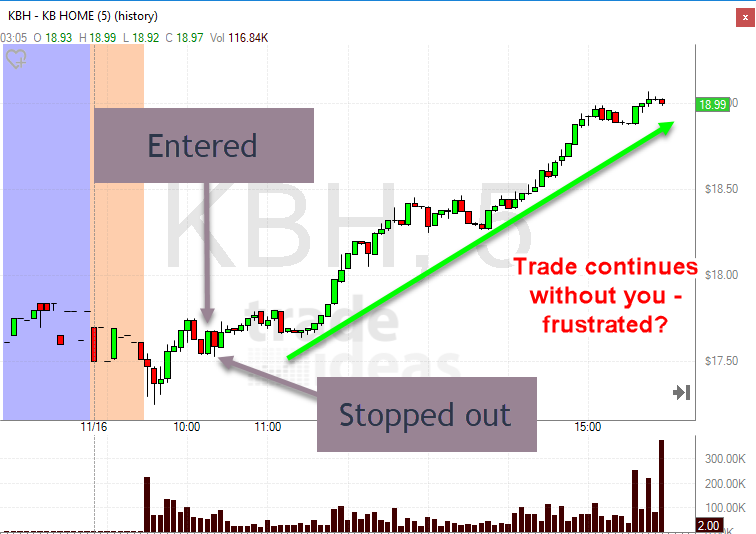I came across the tweet from Mike Bellafiore the other day describing a typically very frustrating trading experience that I’m sure will resonate with a lot of traders.
So you make a trade with all your risk parameters set and you get stopped out, only to see the stock move strongly in your direction. When the dust settles, you stare at a beautiful chart — a quintessential move that is right up your alley — and you found a way to take a loss on the trade. This situation is not that uncommon if you’ve been trading for any length of time and, man it can be frustrating. Here’s a good example from Friday in KBH:

The article describes the situation as if the trader was fundamentally unprepared for this particular trading situation and how he should have done a little more homework to handle the trade differently once he was stopped out. I agree you should absolutely do as much as you can to prepare for the trading day well before the opening bell rings.
Being Unprepared Isn’t The Reason
The important thing to remember though is that you can do all the preparation in the world and this situation is guaranteed to still happen. It would be statistically surprising if this DIDN’T happen pretty routinely.
The proper takeaway I’ve learned over the years is that a well-functioning trading plan will necessarily have these trades occur with regularity. In fact, it’s actually a positive thing that they occur — your general thesis is sound and your stop was placed almost perfectly.
Any Single Trade Is Irrelevant
Remember: any single trade is unimportant to the success of your trading system. If one trade can cause this type of meltdown, then you either need to trade with smaller size or redesign your trading system.
Don’t let this situation frustrate you. Handle it like a pro — recognize it and make a mental note. If it happens a lot, go back and backtest using a looser stop and see if there’s an improvement. Only make changes if you can prove to yourself that an alteration will be more optimal over a large number of trades.